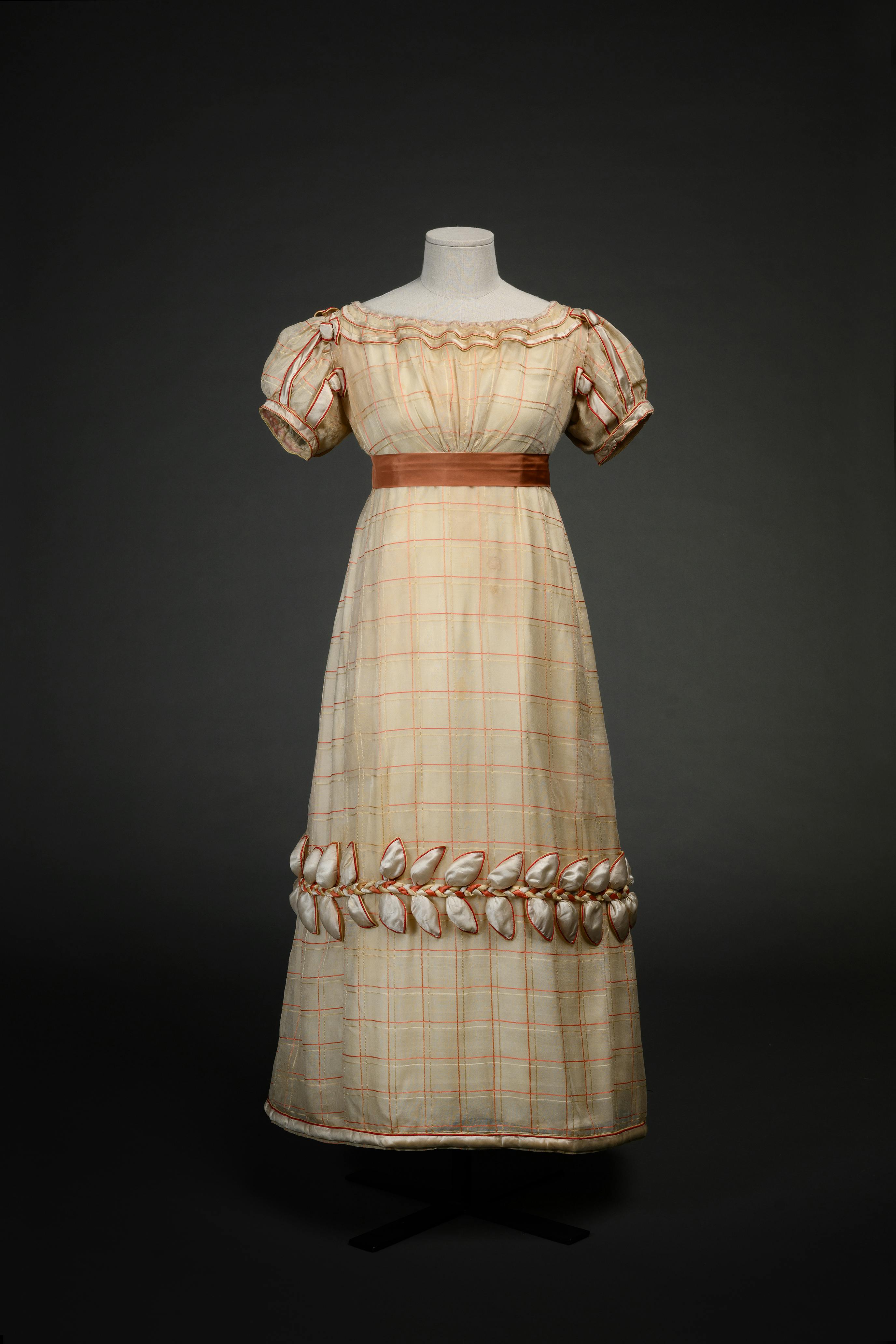Day dress
Italian production
Compared to the Napoleonic phase, which was dominated by the tapered, tubular lines typical of the robe en chemise - the long loose-fitting dress of neoclassical reminiscence with very high waistline and body-hugging skirt - the women's dress of the Restoration period saw a modest recovery of width in the skirts, which now resembled the shape of an hourglass by slightly flaring out towards the end. The skirts were also shortened, thus leaving the feet uncovered. At the neckline, which was still quite generous, the squared lines of the Empire dress were now softened and curved, while the sleeves, which had not yet reached the considerable width of the ‘à gigot’ design in vogue from the 1830s onwards, followed the balloon shape of the previous period, while also re-proposing its small size. Drapes and ruffles were used to bring out the fabric of the bust, where the decreasing height of the waistline gradually approaches its natural position. Dresses acquired more dynamism also thanks to the extensive use of elaborate trimmings, which were generally reserved for sleeves and skirts embellished with ribbons, bows and cotton-padded satin appliqués.
This dress, made of ivory-coloured silk gauze with a yellow and orange-red plaid pattern, perfectly responds to this decorative style. It was donated to the Museum by Countess Giulia Accolti Gil, a descendant of the noble family of Troilo from Apulia.
The short sleeves and neckline are criss-crossed by red-lined white satin ribbons culminating in bows at the shoulders. A thick band in padded satin - generally referred to as “burlotto” ̶- runs along the hem of the skirt, keeping it taut, while a rich floral motif, consisting of additional burlotti arranged on either side of a three-coloured satin braid, covers the circumference of the skirt at the height of the knees.
During the 1820s, the use of such copious amounts of fabric as those required by the rich dresses of the Romantic era was not yet dictated by fashion. Silk, the production and use of which underwent a major revival already during the Napoleonic era, continued to remain one of the preferred fabrics in tailoring.
The relative linearity of the design, which was still largely conditioned by the persistent influences of the Empire style, was slowly assimilating the latest inflections of contemporary taste. As a matter of fact, the plaid motif of the dress is influenced by the fashion launched in 1822 by the Duchess of Berry on the occasion of the Parisian ball she organised in memory of Mary Stuart, the Queen of Scots from 1542 to 1567.
La Galleria del Costume/2 , Centro Di, Firenze, 1986, pp. 28-29; R. Orsi Landini, Materia e forme: tessuti e fogge del vestire femminile nei secoli XVIII e XIX , in Galleria del Costume/4 , Centro Di, Firenze, 1990, p. 17; Eleganze della moda fra ‘700 e ‘800. Abiti storici della Galleria del Costume di Palazzo Pitti , Skira, Milano, 1997, pp. 72-73; Le collezioni. Costumi ed accessori dal XVIII al XX secolo , Sillabe, Livorno, 2000, p. 17.
